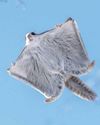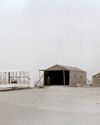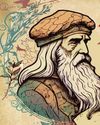Of the 11 children in the Sherman family, red-haired Cump was the studious one. He read books and studied mathematics and Latin, while his younger brother John got into fistfights.

No one could have imagined that Cump would grow up to become famous as a fighter and a soldier. Yet, although William Tecumseh “Cump” Sherman is best remembered for his military role in the Civil War (1861– 1865), he was a thinker, too. He fought for the country because he cared deeply about the promise of the American nation.
Cump was born on February 8, 1820. His father, a well-known lawyer and judge on the Ohio frontier, died nine years later. His mother could not take care of her children alone, so Cump went to live with family friends. His foster father, Thomas Ewing Sr., was a prominent politician. He introduced Cump to congressmen, senators, cabinet officials, and even presidents. He also pulled some strings and got his teenaged foster son an appointment to the U.S. Military Academy at West Point in New York. Cump hoped to become an officer in the U.S. Army.
As a child, Cump had watched his father and his foster father manage the country’s affairs through law and politics. As a cadet at West Point, he learned how to serve the country through military service. He was an excellent student. He didn’t care much about how neatly he dressed or how well he behaved, however. In a school based on obeying rules, that approach got him into trouble. Yet, he managed to graduate close to the top of his class in 1840.
Sherman was assigned to fight in the Second Seminole War. It was a long, bloody effort to force Native Americans out of Florida. When it ended in 1842, he stayed in the South. He was stationed in Georgia and South Carolina. His connection to his famous foster father made him welcome in the homes of the nation’s wealthiest families.
This story is from the January 2018 edition of Cobblestone American History Magazine for Kids.
Start your 7-day Magzter GOLD free trial to access thousands of curated premium stories, and 8,500+ magazines and newspapers.
Already a subscriber ? Sign In
This story is from the January 2018 edition of Cobblestone American History Magazine for Kids.
Start your 7-day Magzter GOLD free trial to access thousands of curated premium stories, and 8,500+ magazines and newspapers.
Already a subscriber? Sign In

Airborne Animals
Humans have taken to the skies in balloons, gliders, and airplanes-but we're not alone among the clouds. Animals of all sorts have evolved to harness wind power.

TAKING OFF
The Wright brothers expected airplanes to “take off,” but even they might be amazed at the way the airline industry has become big business. In the past, it was expensive to send something by plane.

WHY KITTY HAWK?
The Wright brothers searched carefully for the best place to test their gliders and flying machines. Their main concern was for good, steady winds. But they also hoped to find a remote location to allow them to perform tests away from the public eye.

Da Vinci's 4 Designs
Have you ever wondered how a bird flies? Leonardo da Vinci (1452–1519) did. He thought that understanding how a bird flies would provide the key to human flight. So, what did da Vinci learn from birds?

Along Rivers and Through Prairies
An Interview With Dr. Robert Moore

Routes Well Traveled
The United States is not the only country that celebrates its historic routes. But the routes included here are much older!

Last Stop, Independence
For many Oregon Trail pioneers, Independence, Missouri, was the last stop in the United States. Soon after it was founded in 1827, the waterfront town became a strategic city on the Missouri River.

Danger on the Trail
About 20,000 emigrants died on the Oregon Trail. That averaged to about one grave for every 100 yards from the Missouri River to the Willamette Valley. And because pioneers had to keep to a steady pace each day, burials on the trail were hasty. There often was no time to create a marker to note a burial site.

Keeping the Legacy Alive
Several sites in Virginia work to keep alive James Monroe's legacy. In Westermoreland County, Monroe Hall, Monroe's birthplace and the place he called home until he was 16 years old, has been re-created.

The American Colonization Society
In 1821, President James Monroe signed into law the controversial Missouri Compromise.